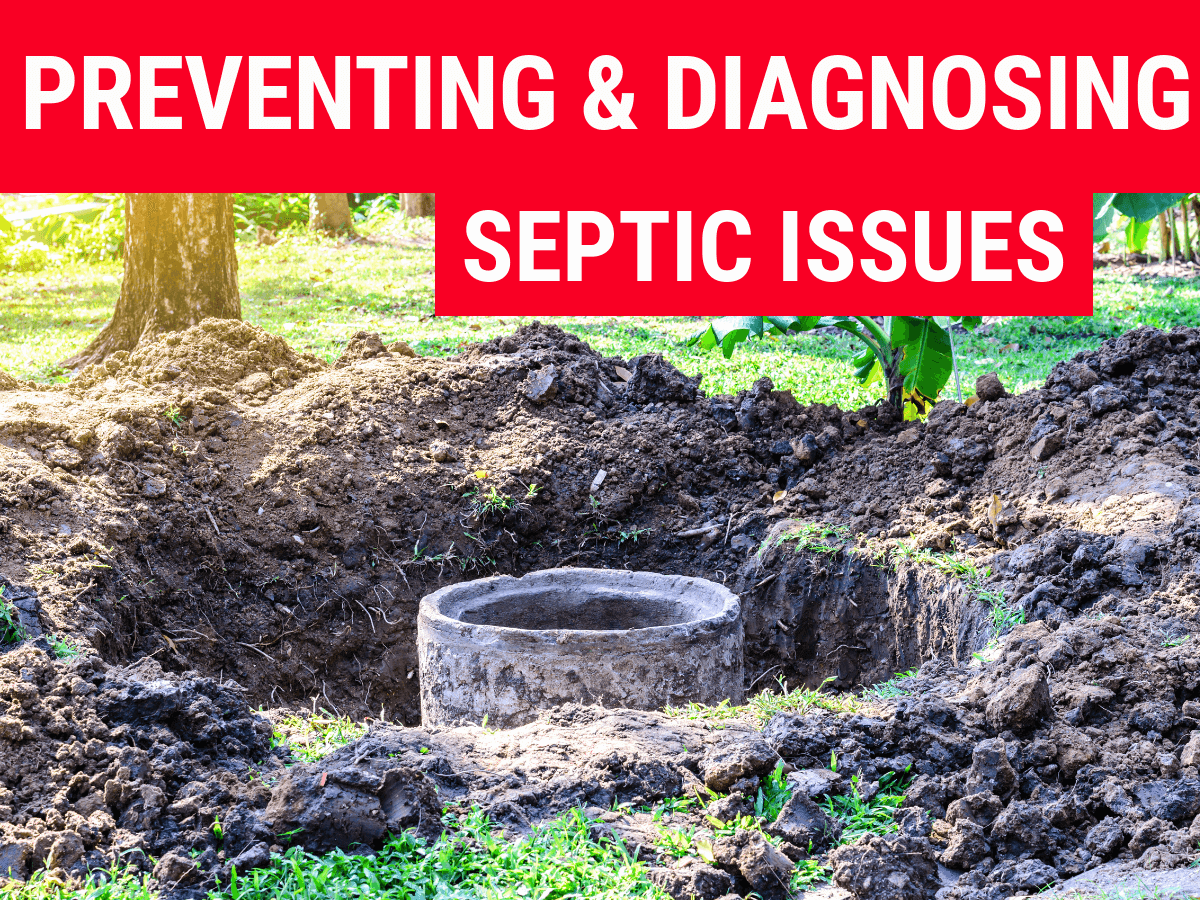Preventing and Diagnosing Septic Problems in Your Home
Nasty backups in your plumbing? A faulty septic tank can mean a lot of time and money, or even illness and infection. Take a look at these common septic system issues and what to do to prevent them.
1. Too Much Water
Sewage odors and slow, gurgling drains might be signs that you’re overloading your septic system. If the excess water isn’t already around your ankles, check your pipes and distribution box. Is there any standing water? If so, it’s time to call a professional.
Each septic system is made to absorb a finite amount of water based on the size of a home—that’s your flow rate. If you surpass that rate, the solids in your septic system escape into your home or yard. What can you do to prevent that?
- Moderate excessive water usage. Long showers, running faucets, and simultaneously operating appliances like dishwashers and washing machines raise the water level in your septic tank.
- Immediately repair leaky plumbing. This will help you protect and maintain your septic tank capacity while preventing future problems.
- Disconnect clear water waste from icemakers and water softening discharges. This will help to reduce the amount emptied into your septic tank.
2. Not Watching Your Waste
Only pour biodegradable products down your drain. Processing human waste is pretty easy for a septic tank, but once you start adding in soaps and detergents, oil and grease, and other residue that doesn’t break down naturally, your septic system won’t run properly.
This is especially true of toxic chemicals like gasoline and paint. Not only do these harsh chemicals kill necessary bacteria that process waste, but they also seep into surrounding soil. The pollution can be dangerous for your family and pets. What can you do to prevent this?
- Regularly schedule a septic cleanout. This should be done every two to four years to clear inorganic solids. Pumping your tank ensures it won’t prematurely clog.
- Install an aerobic septic system. These systems help waste-killing bacteria grow. Oxygen encourages growth of good bacteria that love cool, dark places. Don’t use additives, which can begin an endless substitution cycle.
3. Dead Drainfield
If you notice swampy areas above your tank, your drainfield may be too old and weak to properly trap solid material. Bright green, spongy grass over your septic system is a strong indication that you have an overflow of sewage. This can also be due to poor system maintenance.
What can you do to prolong your septic system’s life?
- Keep the area above the drainfield free from obstruction. These obstructions can include parked cars, gardens, playground equipment, etc.
- Divert runoff water from gutters and basement sump pumps. Most septic tanks are already designed and located to withstand this type of surface water. If you have an older septic system, consult an expert to seal cracks and visible damage.
Septic problems can be tough to diagnose and risky to repair. To get the job done right the first time, contact Fletcher’s Plumbing and Contracting, your local plumbing professional. We offer 24-hour emergency service and decades of septic plumbing experience.

